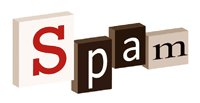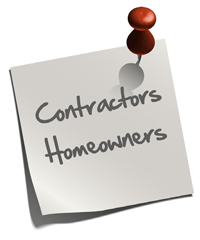Implementation
The traditional, older forms of advertising such as radio, television, newspapers, magazines, and Yellow Page listings are governed under a different set of regulations than
email marketing. One of the most notable differences is the legal criteria that apply to email marketing when it comes to how consumers are approached and how their requests are implemented.
Compliance
A home improvement business that collects business cards from contractors or has signup sheets to collect information about their customers cannot simply enter that data into their email subscription list without obtaining clear and unequivocal prior permission to do so from the customer. If these prerequisites are not satisfied, the business manager or owner is liable for violation of federal law.
CAN-SPAM Violations Have Severe Consequences

The
CAN-SPAM Act regulates email marketing in the United States and it describes extremely clear standards on how all businesses must conduct their online marketing. This form of legislation is called an "opt-out" regulation as it demands immediate compliance for any subscriber who requests to be taken off an email subscription list. The federal government takes violations of CAN-SPAM extremely seriously and any violators are subject to very harsh penalties including huge fines and jail time.
Facilitate Unsubscriptions
Your home improvement business must make it very easy for your subscriber to request that you delete their information from your computer systems. All of your outgoing emails must contain a readily visible and accessible unsubscription link that will immediately be acted upon by your company. Failure to honor an unsubscription request swiftly and irrevocably is a violation of federal law and may trigger extremely unpleasant legal sanctions.
Manage Bouncing Emails
When any home improvement business sends out an email, be it a personal missive, a business inquiry response, or a commercial
email newsletter, three separate things can occur:

The send is successful and it will be delivered as intended.
The send is delayed perhaps indefinitely due to a problem such as your customer's overly full inbox or internal net traffic bottlenecks; called a Soft Bounce.
The send is considered impossible to deliver since the email address no longer exists or for some reason has been blocked; called a Hard Bounce.
In both bounce cases you will receive a message from the internet's Mailer Daemon to inform you of the reasons for the bouncing email. A soft bounce is not your fault but you should take steps to rectify it, possibly by contacting your customer by other means. If the bounce is hard, then it is considered your responsibility as you should know the status of your list's email addresses before sending. If you repeat a send to an email address that you have identified as a hard bounce, the ISPs that route traffic along the internet will place you on a blacklist. If that occurs you will find that it is nearly impossible to send out any emails at all, no matter whether they are personal, business, or email marketing newsletters.
Privacy Policy
A number of home improvement business owners and managers simply cut and paste a competitor's privacy policy onto their own sites. Not only does this act create duplicated content, which is frowned upon by the search engines, but it also opens you to potential legal liability as the privacy policy does not accurately reflect the activities you are undertaking in your online business. Your business's privacy policy should be drafted by your attorney to ensure that it is a perfect fit to your company.

Segment Your List
Segmentation of the newsletter subscription list is imperative for all home improvement businesses, as it is the best way to focus your promotional strategy based on the demographic and behavior characteristics of your audience. It is evident that the professional contractor who places six figures annually on their charge account at your facility's location has different requirements for information on your business than the weekend handyman working through his Honey Do list. That differentiation is critical as it is fairly pointless to promote a DIY class on building a shed to the former and to pitch a discount on multiple lifts of lumber to the latter. Through the application of segmentation techniques you can develop newsletter content that is a precise fit to the various characteristics of your customer base and you'll be able to propose precisely the types of discounts, equipment, rentals, tools, and accessories each is most likely to be interested in.
Split Test Your Ongoing Content
All home improvement businesses engaging in email marketing have a need to continually test their campaign's content. The most common and popular test is named the A/B split: identical content is sent to a specific list segment with only a single element changed, possibly the
preheader, main image, or particular text content. By comparing the email metrics of each send you will be able to determine how your customers are reacting to each, and by continued A/B testing hone your promotional strategy for maximum effectiveness.
Capturing the Personal Data of Your Customers
Most customers of home improvement business do not want to divulge personal information unless they deem it absolutely necessary. This privacy need for the customer has to be balanced against your requirement for the extensive demographic information that you can use to improve your segmentation efforts. Offering incentives such as special discounts or DIY classes to your customers in exchange for basic demographic data such as age, gender, and some consumer preferences could assist you in obtaining this critical segmentation information.
Analyze Your Customer's Behavior
The best way to analyze the success rate of your
home improvement email marketing campaign is through a review of open and click-through rates. Through this analysis you will learn that there are essentially three different types of subscribers:

The ones who never open an email, and thus are best deleted from your list.
The ones who read but don't act on your emails. These are best left on the list as they often choose to interact with your home improvement business in ways other than a click-through.
The ones who open and click on emails. These customers are your best email prospects as they directly respond to your calls to action.
Composing specific content to suit these types of customers provides you yet another segmentation opportunity. The continued promotion of a click-through may be seen by your subscribers in the second group to be intrusive and they might better respond to offers of home improvement services, classes, or discounts that do not require an online action to obtain.
Good Email Practice
Good email practices for home improvement businesses ensure that the effectiveness of the email is maximized for best returns. Preheaders and
subject lines should be carefully composed, and the various browser and mobile display characteristics and restrictions should be taken into consideration when choosing your email template. Providing multiple landing pages featuring highly targeted content specific to the links in the segmented outgoing emails will allow you ample range to perform the necessary series of A/B split tests.
Email Metrics
Statistics show that 57% of all home improvement business owners and managers were not able to state what their click-through rate was, and 36% were also equally unaware of their open rates. It is a serious error to lack the critical awareness of the essential
email metrics of open rate and click-through when participating in an email marketing campaign. This failure effectively denies the home improvement business owner or manager understanding of the full range of factors that need to be identified in order to build the success rate of your online promotional campaign, as well as your business's image and reputation in cyberspace.